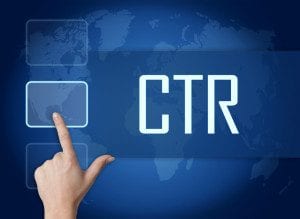Disclosure: This post has affiliate links. I earn a commission at no extra cost to you. I only recommend products I personally believe in. More info on my Privacy Policy page.
How SEO and Search Engine Rankings Have Changed in 2014
 2014 has been a contrasting year so far for SEO. With all Google’s major algorithms taking flight the search engine rankings have changed dramatically. Plenty of experts within the industry have been questioning how search engine optimisation will be able to progress in the future, thanks in part to Google’s ever tightening grasp. From our position, all we can see is that Google is taking a more drastic approach to the way it tackles people who use spammy techniques to try and climb the search engine rankings. Clearly you have to look at the upside and downside to this. The upside is that at least someone is regulating what these spam artists are doing. On the other hand, the algorithm updates often affect some websites and webmasters who are not doing anything wrong at all, dropping their search engine rankings and causing pandemonium for many SEO firms.
2014 has been a contrasting year so far for SEO. With all Google’s major algorithms taking flight the search engine rankings have changed dramatically. Plenty of experts within the industry have been questioning how search engine optimisation will be able to progress in the future, thanks in part to Google’s ever tightening grasp. From our position, all we can see is that Google is taking a more drastic approach to the way it tackles people who use spammy techniques to try and climb the search engine rankings. Clearly you have to look at the upside and downside to this. The upside is that at least someone is regulating what these spam artists are doing. On the other hand, the algorithm updates often affect some websites and webmasters who are not doing anything wrong at all, dropping their search engine rankings and causing pandemonium for many SEO firms.
In this ever-changing digital world the need to raise your online presence has never been more important. With the changes that have been made in the SERPs (search engine results pages), this has made for a more challenging and competitive market. Very similar to natural selection, only the strongest will survive. Those who choose to use black and grey hat techniques will simply dwindle into the realms of cyberspace. It is important to turn away from what some may label “bad SEO” and find more pure solutions if you want to progress. Similar to a game of Jenga, if you make one bad move when it comes to SEO, it’s all probably going to come crashing down on you.
 So what’s happened since the Events of 2013?
So what’s happened since the Events of 2013?
Having examined the targets for the 2013 algorithms more closely, there appears to be a trend that has continued forward into 2014. There have been some small adjustments to some algorithms that have affected how Google views link and content quality. Keeping an eye on your link profiles, and making sure they show a natural progression of quality links, whilst also performing regular content checks is a 5 star response for any webmaster.
Changes in Key Rankings
On Page Technical Factors – i.e. Titles and Metas
 The importance of on page technical factors such as title and Meta descriptions has decreased in value in the past year within the search engine rankings. This is simply because Google is focusing more solidly on off-page link profiles, social media and actual on-page content as opposed to the technical parts that make up a site. Where on page may have dropped as a search engine rankings factor, key factors such as Click Through Ratio and relevant terms have climbed into the top 2 positions. Making them extremely important where search engine rankings are concerned. The Click Through Ratio is the number of people who have clicked to visit a page on your website divided by the number of people who have seen your indexed page in the search engine results pages. A higher CTR is a good signal to Google that your site is popular with users and that the searches you are shown for are very relevant to the user.
The importance of on page technical factors such as title and Meta descriptions has decreased in value in the past year within the search engine rankings. This is simply because Google is focusing more solidly on off-page link profiles, social media and actual on-page content as opposed to the technical parts that make up a site. Where on page may have dropped as a search engine rankings factor, key factors such as Click Through Ratio and relevant terms have climbed into the top 2 positions. Making them extremely important where search engine rankings are concerned. The Click Through Ratio is the number of people who have clicked to visit a page on your website divided by the number of people who have seen your indexed page in the search engine results pages. A higher CTR is a good signal to Google that your site is popular with users and that the searches you are shown for are very relevant to the user.
Whilst focussing on CTR you should also give good thought to the relevancy of terms used in your content. On average, sites that create relevant, unique and engaging content are more likely to rank higher than sites that do not do this. One thing that may be able to help you improve the relevancy of your content is the use of LSI keywords, also known as Latent Symantec Indexing. LSI keywords are words or phrases that are contextually relevant to the content you are creating. Use of LSI will ultimately help to improve your search engine rankings overall.
Quality and Amount of Backlinks
Backlinks have and will continue to be an essential part of SEO for the foreseeable future. They are a major part of Google’s Search Engine Algorithm. You may have heard us mention Google a lot in this article so far, but this is merely because 85% of all searches on the Internet are made using Google as a first point of reference. Google process well over 3.5 billion searches each and every day and over 1.2 trillion searches per year worldwide.
The amount of backlinks a website has is the key factor when taking link building into consideration. However this needs to be worked on effectively as too many poor, low quality backlinks can lead to a website being penalised by the search engine or even banned entirely. The quality of all inbound links that you obtain must be clean and authoritative, quality over quantity is the most important thing. As with the amount of backlinks has grown into a top ranking factor, the effectiveness of anchor text backlinks has grown much weaker than they used to be. Abuse of anchor text in backlinks can lead to your site being banned, courtesy of a visit from the Google Penguin Filter that has affected a lot of SEOs search engine rankings over the past year.
 Content Marketing Has Grown More Significant This Year
Content Marketing Has Grown More Significant This Year
Content Marketing is a word that daunts some SEO professionals, and often we struggle to see why. In the eyes of the search engines, to climb up those search engine rankings you must continue to upload, regular, high quality content. This is because it shows Google that you are an active site with plenty of usual information for users. Whilst considering the quality of writing you should also remember to use social signals to gain shares and engagement on social media from web visitors. This will also give your contents search engine rankings a small but effective boost.
Bounce Rates can have an effect on rankings
Another signal to the search engines that your content is quality is a low bounce rate. Bounce rate is the percentage amount of visitors who visit and then leave the website without visiting any other webpages on the same site. The rate is a strong sign that you have created engaging content, as your visitors are sticking around to read it across multiple pages.
Social Media Has Also Become More Effective
In past years, social media has grown to be a big feature in any fully functional campaign. The rise of sites like Twitter and Facebook have helped to encourage other competitors such as Pinterest and Instagram to up their game. Indication is essential to any good SEO campaign as it shows that content is being shared by lots of interested users. 6/10 of the current top ranking factors involve social sharing networks, the top 3 of which are:
- Google Plus
The use of Google Plus is now a top level ranking factor. It is a vital part of any campaign as +1’s will help strengthen your ranking positions. Quality Google + content is being bumped up the search engine rankings and this can help divert traffic to your website. This is because a Google +1 is a strong social signal. As it is monitored by Google it shows them that you are sharing content that their users love.
Building Up Niche Followers on Social Media is key
The key things to remember about social media is that because there are so many users on each platform, your content and business page in general is seen by thousands of people each month. One simple Facebook share from an interested follower can allow hundreds of their friends to see the post. These potential mutual followers may become your businesses customers of the future.
Conclusion
All in all, we feel that the rest of 2014 and the start of 2015 will be a crucial time, if any, for SEO’s to up their game and try and compete for those top search engine rankings. Google will carry on making updates to their algorithms as time goes on and may become stricter with certain techniques, especially when it comes to link building. However, the future still looks bright for Search Engine Optimisation and whilst being competitive, it is still a great time for professionals to take advantage of their experience and help their sites increase their visibility through the search engine rankings.
I you feel like you would like to increase your likelihood of improving your rankings you should take a few steps towards doing so, if you have not already. This may include:
- Building a well-structured website that has content which makes use of keywords both on page and in the technical areas. Remembering of course these are all still ranking factors, whether minor or major.
- Be sure to make sure your content is informative, and engaging. Try to get some outbound links to niche-related sites with trusted information. Also remember that the use of media on websites such as video, audio, infographics and images can all help to boost your search engine rankings by lowering bounce rates.
If you follow our advice, then you will more than likely be on the way to helping your website achieve top performing search engine rankings for your key terms. If you run your own business and want the professionals to take care of your SEO and Social Media for you then contact us at SEO CoPilot
